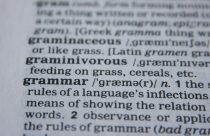Do Idioms Improve or Detract from Academic Writing?

When you think of popular English idioms—hit the nail on the head, kick the bucket, the last straw, see eye to eye, and so on—and examine the possible usage, you will find that there are a number of idioms that are used in both formal and informal usage. If you are not certain of what idiom means, here is the definition: “An idiom is a commonly used word or phrase with a culturally understood meaning that is different from what its constituent words’ translation would indicate.” It is also called a figure of speech, expression, proverb, or saying.
As confusing as an idiomatic phrase might be, even a change as small as a preposition can make a difference: “Prepositional idioms often give non-native speakers of English nightmares, and even native speakers of English need to double-check them at times” (CMS 5.190). You could be smitten with love (deeply attracted) for a person but would not want to be smitten by the person. Idioms add color and imagery to the writing, but they could be seen as too informal. So, how should they be used in academic writing? Before you begin writing an article, ask yourself this question: How important is it to make your writing sound like a native English speaker and/or less formal? The following points will help you to decide:
Pros
- Using idioms shows familiarity with English. It demonstrates that you are comfortable with both formal language and informal colloquialisms.
- When you want to make your writing sound more conversational (informal vs. formal), including idioms can give your writing a more relaxed tone. For example, this sentence presents formal sentence structure and terms: “A thorough review of the underpinning concepts was made, but the principles exceeded my grasp”), whereas this one sounds more informal: “I read the lesson word for word, but it’s all Greek to me.”
- Because idioms add imagery, using them can make your writing more memorable. A sentence such as “She said it was time for him to have a taste of his own medicine” could be easier to remember because the reader can relate to the act of taking medicine or to the displeasure of a bad smell or taste.
Cons
- Readers unfamiliar with a certain phrase might take it literally. For example, a man was so angry that he was “foaming at the mouth.” Because an illness like rabies could actually cause this to happen, a reader might wonder whether the phrase was meant metaphorically.
- Idioms vary by country, region, and period—an English term may be specific to America, England, or Australia or specific to World War II. A sentence such as “His talk was all flumadiddle” would be understood by readers in the 1920s to mean “nonsense,” but the term would probably be misunderstood today.
- Using idiomatic phrases could be distracting for readers who expect a formal tone. Scholars in scientific fields are likely to be accustomed to more formal writing, and phrases such as “the icing on the cake” or “a New York minute” might be seen as out of place in academic writing.
Do Idioms Fit the Subject and Audience?
Consider whether the topic is one that calls for a less formal tone and more vibrant imagery. Are your readers likely to be well versed in English idioms and slang? Once you know what your target audience prefers, you will be able to decide whether the use of idioms is appropriate. Using an idiom is much like using a slang of a particular field. It is like using the regional dialect of Hebrew or the urban slang of New York City. Phrases such as “she wore her heart on her sleeve” and “he had an ax to grind” can either delight or trouble your readers. Research the type of writing that is common for your subject, and you will make a wise decision about using idioms.








